Raising Water Consciousness through
World’s Biggest Photo Exhibition and
Largest collection of Photo Stories on Water
Photo Stories | Water and Livelihood
The Science of Traditional Irrigation in India
Nandita Singh and Om Prakash Singh
30 December, 2016
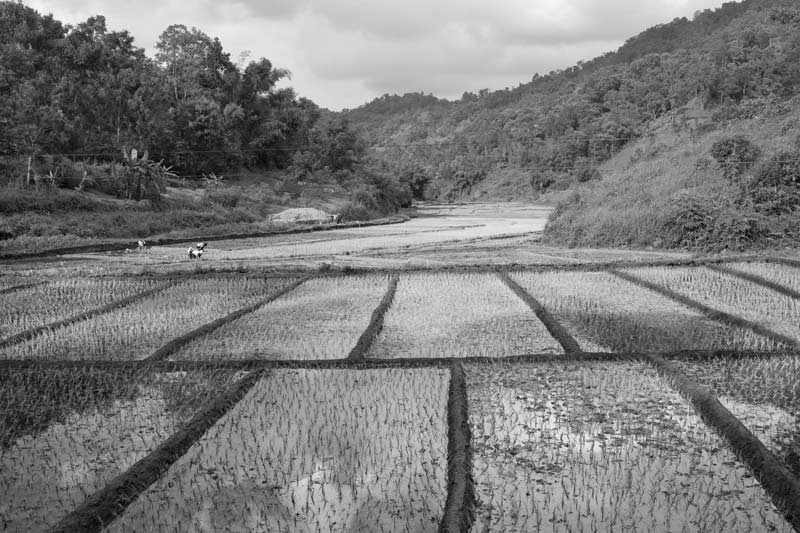
India has been traditionally an agricultural country where crops produced across a variety of eco-climatic zones have sustained populations through generations. Irrigation, as the process of supplying land with water so that crops can grow, has been traditionally enabled through a number of different systems, which are however rooted in two basic scientific principles - the natural water cycle and gravity. These are further supported by particularistic knowledge about the soil type, topography, stratigraphy, hydrological conditions and crop variety. The most basic form of irrigation traditionally practiced is supply from the runoff which is directly stored in the fields by raising bunds around. In the mountainous and hilly terrains, rainfed springs and streams are commonly tapped to irrigate crops in terraced fields on the hillslopes. On the Chotanagpur Plateau in Jharkhand, an intricate irrigation system exists where rainfed streams and springs flowing down low hills and short plateaus are harnessed to irrigate lowland paddy fields in the valleys. South of the Ganges plains in southern Bihar, floodwater flowing down rapidly sloping lands is systematically impounded in a series of village-based reservoirs which may also be interconnected and diverted down the gradient into fields through channels. In western and Peninsular India, the runoff and stream waters are often collected in large irrigation tanks or reservoirs, later supplied to fields through canals. In the Thar Desert in Rajasthan an ingenious irrigation system exists where the scanty rainfall received during the monsoon is stored in shallow tanks, allowed to enhance the soil moisture and then drained out to enable the cultivation of rabi crops. Use of groundwater has also been common in many parts of India, with water being drawn from irrigation wells. In Kuttanad area of Kerala, yet another innovative system exists where lake water is used for irrigating paddy fields that have been actually reclaimed from the lake itself. The traditional irrigation systems of India are diverse, intricately adjusted to the local climatic, hydrological and geographical contexts. By virtue of being based on observation, analysis and experience through generations; these are robust, time-tested and hence reliable and sustainable, having enabled food security for women and men in local communities even through climatic extremes. This photo story presents glimpses of the traditional irrigation science of India. The title photo depicts paddy fields irrigated through mountain streams in a valley in Ri-Bhoi district, Meghalaya.
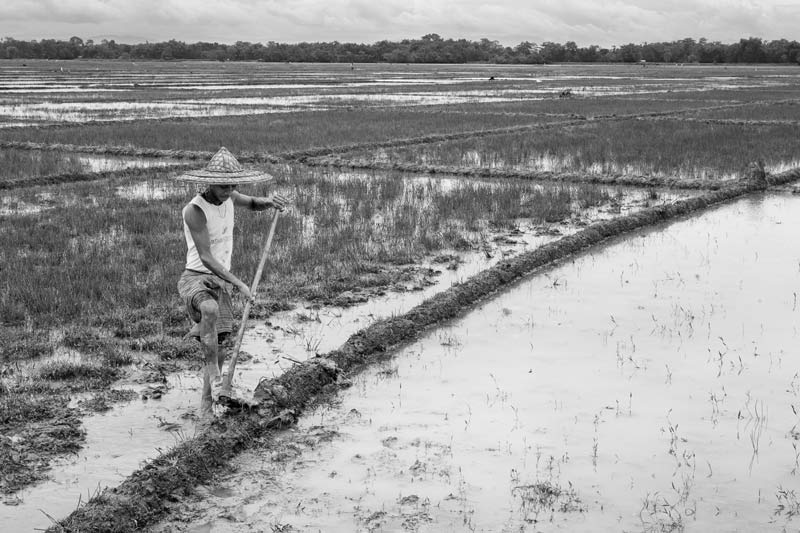
Rainwater harvesting for irrigation through bunding in a paddy field in district Sivasagar, Assam
Water harvesting has been recognized as a rudimentary form of irrigation by the Food and Agricultural Organization of the United Nations (FAO), practiced traditionally through centuries. Described as ‘collection of runoff for productive use’, the runoff may be collected from ground surfaces or rooftops (called rainwater harvesting), or even from ephemeral watercourses (called floodwater harvesting). Both kinds of water harvesting have been traditionally practiced across India in different forms and known by different local names. Bunding of agricultural fields is the most direct and easy way to catch the rain as well as the runoff for restoring moisture or even for growing water-intensive crops like paddy. In areas with sufficient rainfall, such as in the plains of Assam, West Bengal and Bihar rainwater harvesting is a common practice for paddy cultivation. Bunding of fields to harness the rainwater for irrigation is also practiced in arid and semi-arid areas as in Madhya Pradesh, Rajasthan and Odisha. In Madhya Pradesh it is called Haveli system where fields are enclosed on all four sides by earthen bunds called bandhan to retain the rainwater.
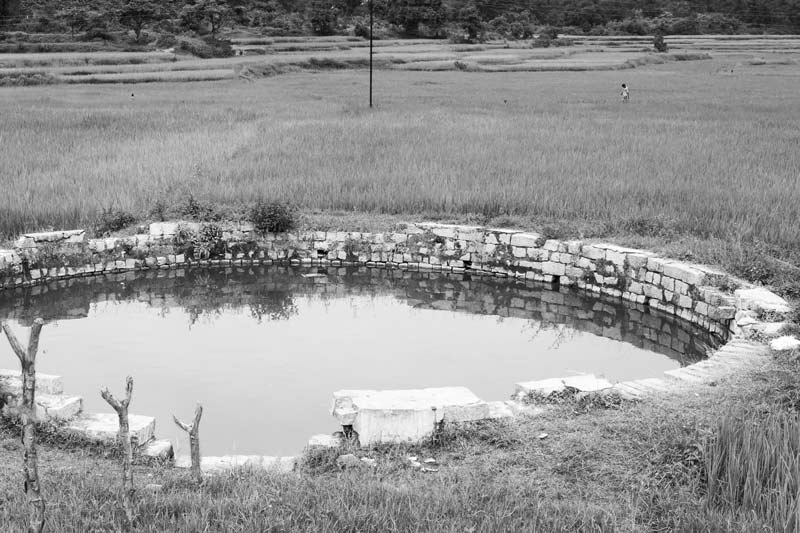
A well for irrigating paddy fields in Khunti district, Jharkhand
Wells have been used for irrigation widely across India since time immemorial. According to one estimate, there exist more than ten million wells in India at present, irrigating about 1/5th of the net irrigated area. The largest areas under well irrigation lie in Uttar Pradesh, Rajasthan, Madhya Pradesh, Punjab, Gujarat, Maharashtra and Bihar. Well irrigation is widely practiced in areas having sufficient sweet groundwater, such as the Ganges Plain, deltaic regions of Mahanadi, Godavari, Krishna and Kaveri rivers, and parts of Narmada and Tapi valleys, where the water table is generally high. However, in arid and semi-arid areas also like in Rajasthan, Gujarat, Andhra Pradesh, Telangana, Tamil Nadu and Karnataka, irrigation wells are used but these are often recharged through special mechanisms. Examples include the johad in Rajasthan, and tanks across Peninsular India, generally in the rain shadow areas where precipitation is low and perennial rivers are missing. The water from irrigation wells has been traditionally lifted by two systems in India, namely the lever and the pulley systems, drawn by human or animal power.
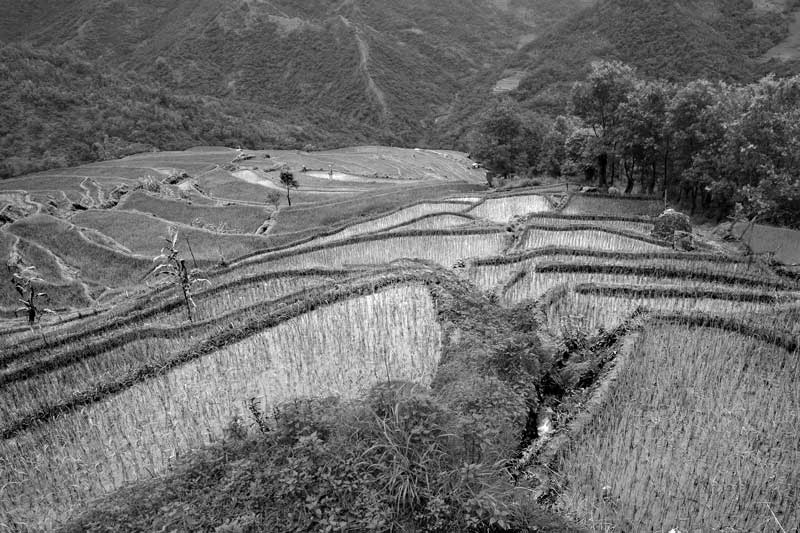
Terrace irrigation for producing paddy in Phek district, Nagaland
On mountainous and hilly terrains, irrigated farming has been traditionally practiced on terraced fields by harnessing hill springs and streams. Known by different names in different areas, the irrigation method basically involves tapping the streams and springs near the point of emergence, and subsequent distribution of the water through a network of channels or bamboo pipes in individual fields that are arranged in terraces along the slope. The width of the terraces is inversely proportional to angle of the hillslope. Depending on the kind of crops being grown, bunds of different heights are raised on the field edges so as to hold the required amount of water. In the hills of Nagaland, annual rainfall is generally high ( over 2000 mm), and utilizing the available water resources, wet paddy cultivation through terrace irrigation is traditionally practiced here. The Chakesangs of Phek and Angamis of Kohima districts have developed expertise in this art. In Phek district the system is called zabo. Channels are dug alongside the fields to divert the water from hill springs and streams to the fields while high earthen bunds in the terraced fields enable water retention to a depth of 5-10 cm through the cropping season. Similar practices are found in hilly tracts of Meghalaya, Arunachal Pradesh, Sikkim and Darjeeling area of West Bengal. In the western Himalayan states of Uttarakhand and Himachal Pradesh, maize is a major crop traditionally produced through terrace irrigation.
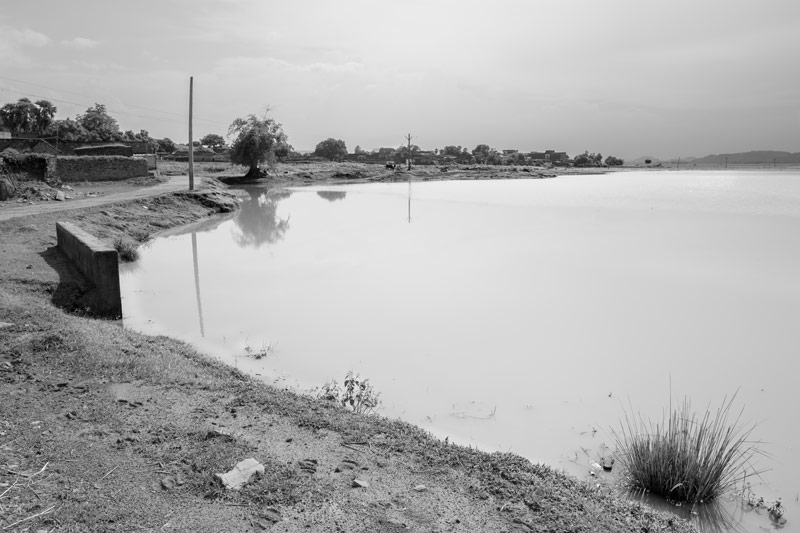
An ahar in district Kaimur, Bihar
The ahar-pyne is an irrigation system unique to the southern Gangetic Plains of Bihar. This traditional system has transformed an area with sandy soil and low water table into the ‘rice bowl’ of Bihar which has enabled rich civilizations to flourish over centuries. A tradition more than 2000 years old, the ahar-pyne system continues to be functional in districts like Kaimur, Rohtas, Aurangabad, Gaya, Jahanabad and Patna even today. It consists of ahars as water reservoirs constructed along rapidly sloping terrains and pynes as channels carrying water. An ahar can be described as a water reservoir with embankments on 3 sides to impound the runoff flowing down the catchment on the fourth side. An ahar may also harvest the floodwaters flowing through a hilly rivulet diverted to it through a pyne. On the lower side, sluices generally allow the excess water to be released out of the ahar.
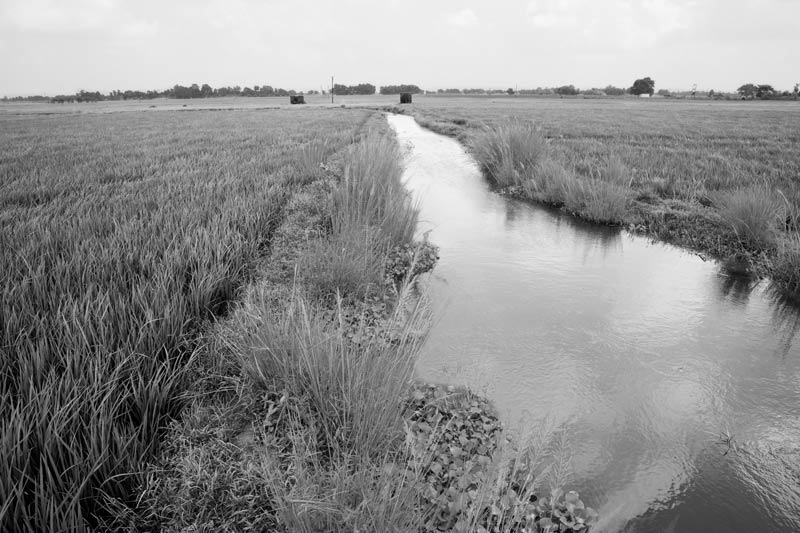
A pyne carrying water from an ahar to the fields in district Patna, Bihar
A pyne is a channel constructed to divert the water flowing down swollen seasonal hilly rivers into ahars, or to convey water from ahars into fields during the cropping season, or to convey water from one ahar in a series to the next, or even to disperse flowing stream water into agricultural fields during the monsoons. The ahar-pyne system enables irrigated paddy cultivation in this undulating terrain and also helps ‘climate-proof’ against delayed or scanty rainfall. It also enables production of rabi crops through enhanced soil moisture. Further, it is not only an irrigation system, but also helps recharge of drinking water sources in the villages. It further offers flood-protection by helping reduction of the speed and quantum of the heavy torrential floodwaters.
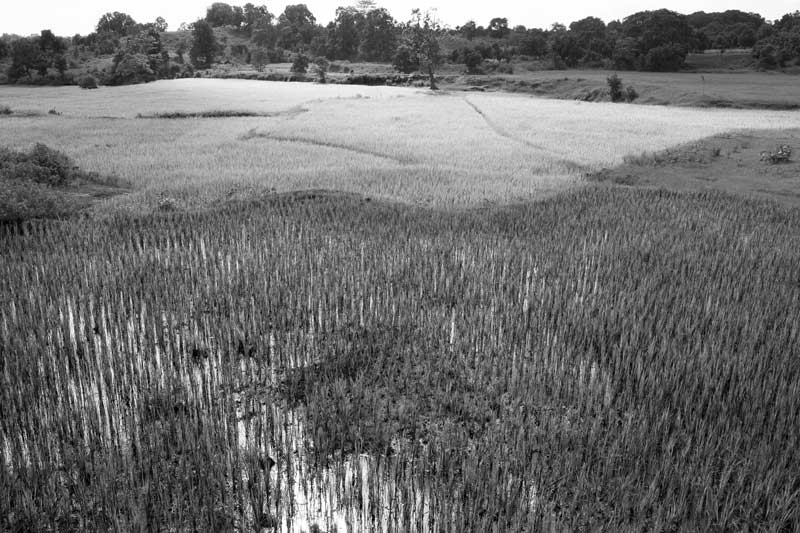
Irrigated garha don fields at the base of a valley in a Munda tribal village in Khunti district, Jharkhand
Jharkhand in the Chotanagpur region is endowed with a good rainfall of over 1300 mm. This has been judiciously used for agriculture by the Munda – one of the most populous tribal communities in the area - through an ingenious irrigation system where the rainfall and runoff is first harvested on upland fields called tanr through field bunding to produce pulses, vegetables and a coarse rice variety. The run off flowing further down the undulating terrains as well as the rainfed underground ephemeral streams are then made to converge at the base of flat valleys to produce finer irrigated varieties of paddy. In these valleys, fertile fields called don are located that receive not only the water but also fertile soil and nutrients from the upper reaches, ultimately producing high quality wetland rice varieties that provides food security to families for the whole year. The lowest fields in the valley base are the most fertile and called garha don. Wells called doba located in the valleys are sometimes used for taking additional irrigation water as well as drinking water. Similar irrigation systems have been traditionally practiced by neighboring agricultural tribes such as Santhal, Oraon and Ho. Without this ingenious irrigation system, paddy cultivation would never have been possible on lateritic soils of Chotanagpur.
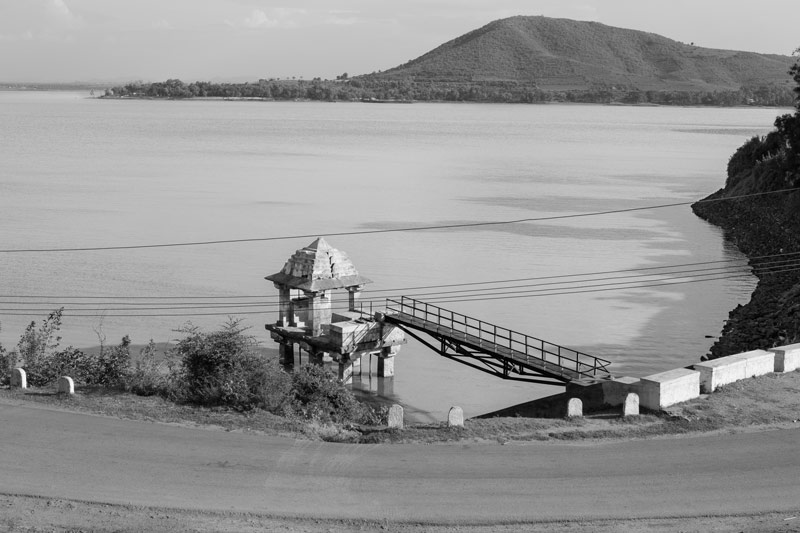
Shanti Sagara, an irrigation tank in Davangere district, Karnataka
Tanks have been an integral part of the ancient Indian tradition of harvesting rainwater and runoff from streams and rivers which is stored for later use. These have been an important source of irrigation particularly in areas where rainfall is uneven and seasonal. According to one estimate, there exist about 500,000 big and 5 million small tanks in the country irrigating over 2.5 million hectares of agricultural land. Tanks have been common in Peninsular India with Andhra Pradesh, Tamil Nadu and Karnataka as leading states. These are locally known by different names, being called cheruvu in Andhra Pradesh, eri in Tamil Nadu and kere in Karnataka. Shanti Sagara, also known as Sulekere, is the biggest tank in Karnataka and one of the largest in Asia, with a history of more than 800 years.
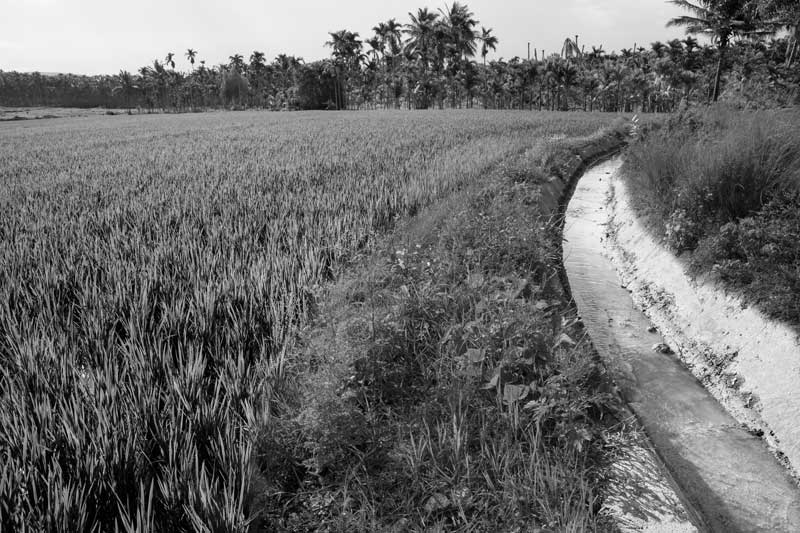
Paddy fields irrigated by a canal from Shanti Sagara in Davangere district, Karnataka
Shanti Sagara provides irrigation water to about 4700 acres of agricultural land located in more than 50 villages. The tank embankment has two sluices named Sidda and Basava from where irrigation water is let out through canals. Paddy and sugarcane are the major crops grown using the irrigation water. Chhattisgarh, eastern Madhya Pradesh and Odisha are other important states with substantial tank irrigation, the practice also traditionally known from West Bengal, Bihar, Bundelkhand area of Uttar Pradesh, Gujarat and Rajasthan.
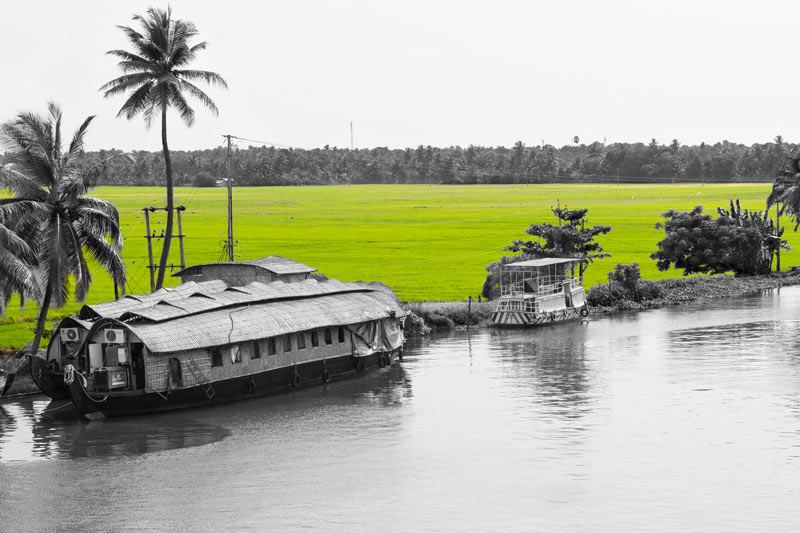
Padsekharam – a block of paddy fields reclaimed from Vembanad Lake - in Kuttanad, Alappuzha district, Kerala
Kuttanad is the region with the lowest altitude in India, and one of the few places in the world where wet paddy cultivation has been traditionally carried out below mean sea level, at a depth of about 0.6–2.2 meters. It is a deltaic formation where rivers Pampa, Achencoil, Manimala and Meenachil confluence into Vembanad, the longest lake of India. Here paddy cultivation is carried out in large blocks of fields called padsekharams, which have been mostly reclaimed from shallow stretches of the lake. The individual paddy fields are called puncha vayals. Due to the unique positioning of the fields below sea level, unlike ordinary irrigation which simply involves application of water to the fields or crops for supporting proper growth, irrigation in Kuttanad has required more intricate knowledge and skills at appropriate water management in the fields so that the right level of water can be maintained in accordance with the requirements of the cropping phase. This in turn involves draining out of excess water from the fields into the lake and letting in of lake water into the fields as and when required.
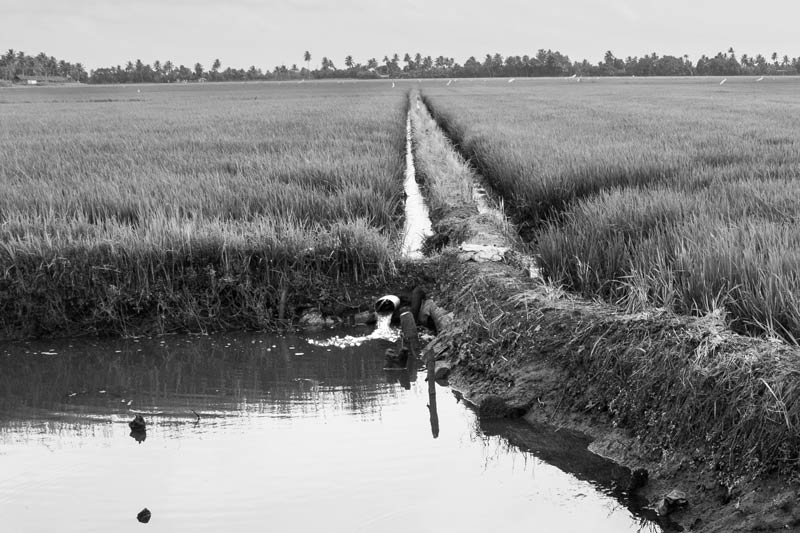
Irrigation in progress in a padsekharam in Kuttanad, Alappuzha district, Kerala
The irrigation system in Kuttanad is enabled through strong ring bunds which keep the lake water out of the padsekharams, and sluices in these bunds which enable the entry of water from the lake into the fields. Excess water is bailed out from the fields into narrow channels that ultimately drain into the lake. The traditional mechanism of bailing out water was by turning large multi-pedal wheels called chakram, which have been replaced in recent times by Axial Flow Pump which is a ‘box and drum’ type pump used for ‘pumping out’ water from the fields rather than ‘pumping-in’. This kind of pump is unique to the Kuttanad region in the agricultural sector in India. Through its unique below sea level irrigation system, Kuttanad accounts for about 25% of the rice production in the state, earning it the title of the ‘rice bowl of Kerala’.
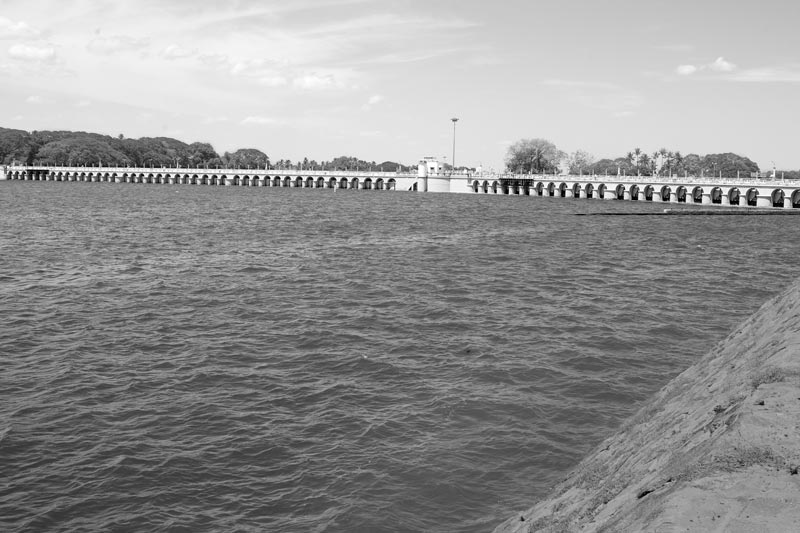
The Grand Anicut – the oldest dam of the world still in use - in Tiruchirapalli and Tanjavore districts, Tamil Nadu
A dam is a barrier that is constructed across a river or stream that water can be impounded to supply water for irrigation or drinking or even to control flooding. Dam construction is an ancient technology in India, the oldest recorded being the stone-built gabarbands of Kutch that are pre-Harappan in age, making them >2500 years old. The Grand Anicut, also known as Kallanai, is an ancient dam across Kaveri River originally constructed by the Chola king Karikalan around the 2nd Century. It is considered to be one of the oldest water-diversion structures in the world which is still in use. The purpose of constructing the Kallanai was to divert the waters of the Kaveri across the fertile delta region for irrigation via canals. The dam was re-modeled by the British during the 19th century. The dam is constructed of rough unpolished stones and is 329 m long, 20 m wide and 5.4 m high. The area irrigated by the ancient irrigation network was about 69,000 acres and at present more than 1.2 million acres, the water being distributed for irrigation through a canal network to agricultural fields in Tanjavore and Thiruvarur districts.
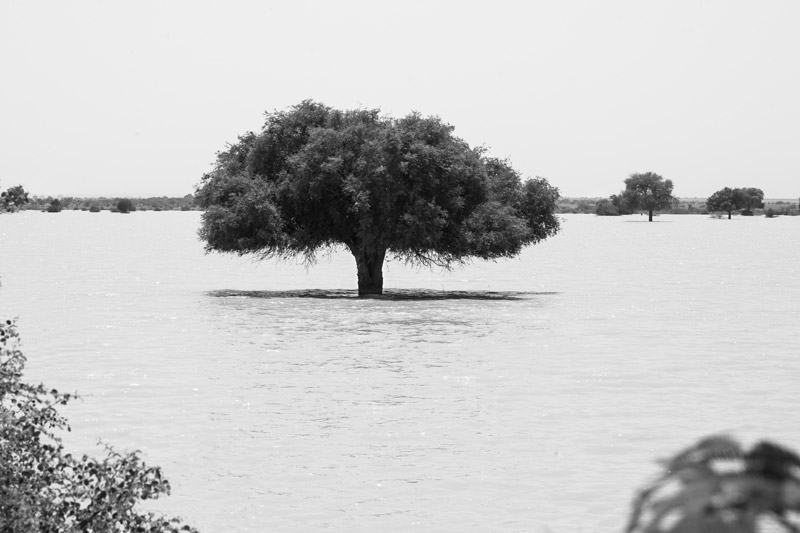
A khadin in Jaisalmer district, Rajasthan
In the arid Thar Desert in western Rajasthan, khadin is a traditional marvel about 1000 years old, enabling production of irrigated crops like wheat, mustard and black gram in the desert. It is saucer-shaped agricultural area on the lower side of a catchment where rainwater is harvested for agriculture. There is an embankment on the lowest side where provisions for overflow and outflow exist. Unlike ordinary irrigation where water is applied in a field a number of times during the cropping season, khadin irrigation enables crop production through enhanced soil moisture achieved by allowing the collected runoff to stand in it for some time. Seeds are sown later during the rabi cropping season in the moist bed after draining out the stored water. The khadin bed is generally very fertile, constituted of clayey soil containing organic nutrients deposited by the received runoff year after year. In years of less rainfall, when there is little water in the khadin, kharif cropping is done instead, growing pearl millets, pulses and melons. Sometimes shallow wells – called beri – are present inside or adjacent to the khadin embankment, providing sweet drinking water to the villagers. Traditionally khadins are large, communal and shared by a number of villages.
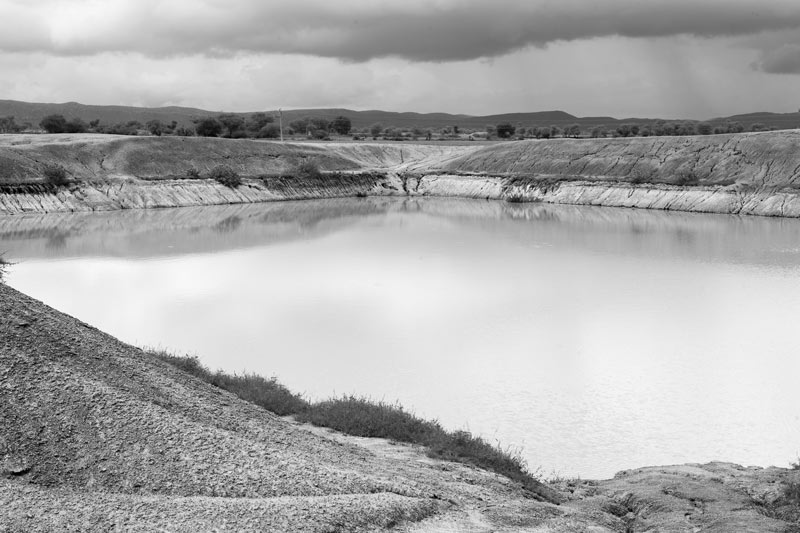
A Khet Talai in Karauli district, Rajasthan
In this semi-arid area, groundwater is saline therefore not fit for either agriculture or drinking. In order to overcome this limitation and make sweet water available for a major part of the year, the concept of Khet Talai has been locally innovated. These are actually small rainwater harvesting tanks located in the fields which collect runoff that is safely stored within high walls around made of mud. Irrigation water is secured from these tanks by lifting the water from the tank to the fields whenever required. Generally these tanks are constructed by individual farmers in their own fields and normally there is also a small well beside the tank which supplies sweet water for the purpose of drinking.
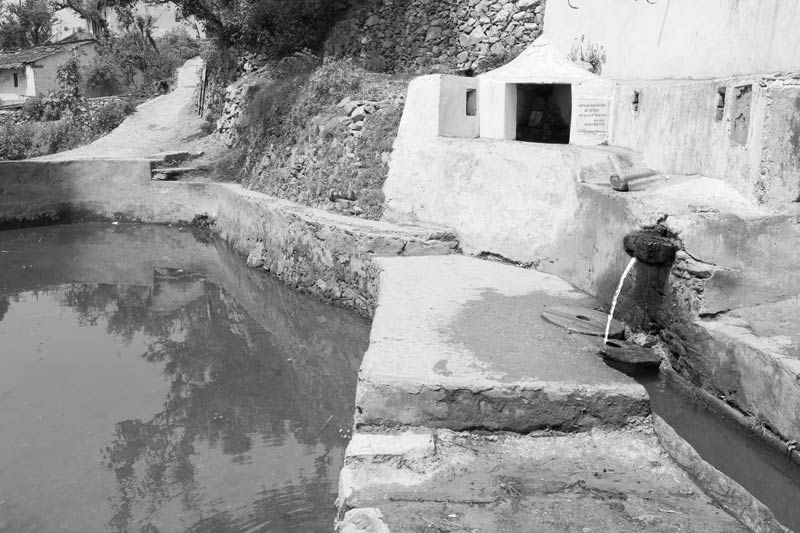
Chahal – a multi-purpose protected spring in district Tehri Garhwal, Uttarakhand
In the Himalayan state of Uttarakhand, rainfed natural springs are harvested for fulfilling multiple water needs of village communities, villages being located along hill slopes. In many places, these springs are protected by concrete structures to prevent soil erosion as well as water pollution. Religious value is often attached to these structures and washing, bathing and pollution of the source in any way is strictly prohibited. Known as chahal, these are generally multi-purpose, providing water for drinking, livestock and agriculture.
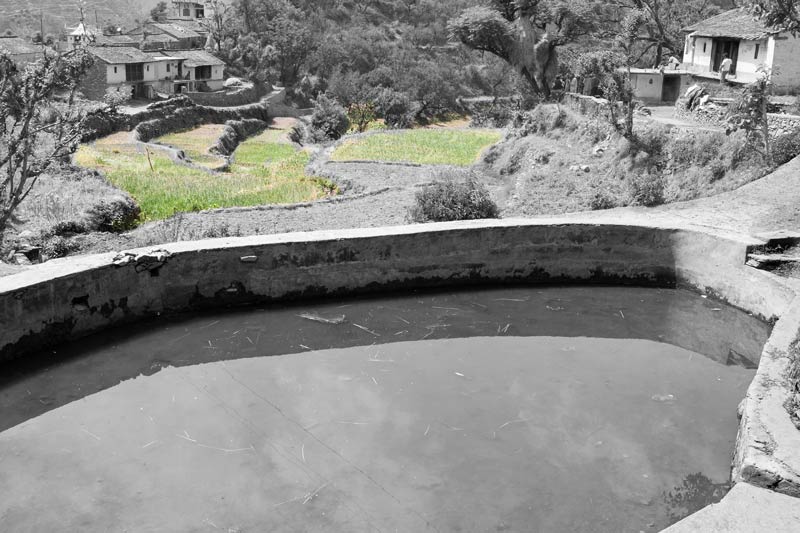
Irrigated fields located downstream of a chahal in district Tehri Garhwal, Uttarakhand
The chahals first facilitate villagers with drinking water at the point of emergence near the hilltop, and then the drainage is collected in pools to provide drinking water for animals at the same level. The drainage from these pools is further channelized to flow down the hillslopes to be used for irrigating fields and kitchen gardens that are located adjacent or downstream.
The science of traditional irrigation in India offers important lessons for learning. By supporting agriculture through generations, the traditional irrigation systems have enhanced food security in communities, provided livelihood options to women and men, and enabled the enjoyment of the human right to food. By virtue of being based in the natural water cycle, in many cases these systems have also helped recharge of drinking water sources, thereby also facilitating women as domestic water managers and securing everyone’s human right to water. These two rights in turn have enabled enjoyment of a number of other related human rights such as health, culture and development. In fact, irrigation has been the engine of socio-economic development of the Indian civilization. Further, by virtue of being embedded in the local climatic, ecological and hydrological contexts, these are locally adaptive systems that have helped communities build resilience to climatic variability and extremes, such as droughts in Rajasthan and floods in South Bihar and West Bengal. The traditional irrigation science of India continues to be in use in many places, thereby indicating its validity and viability even in the modern era. Given the integrated benefits offered by the science of traditional irrigation in India, juxtaposed to some of the sustainability concerns raised by the modern irrigation practices, such as overexploitation of groundwater, conflicts with drinking water needs and degradation of water quality, it would be a judicious move to rejuvenate, promote and develop the traditional irrigation systems further so as to define a way forward for sustainable development in the climate change era.